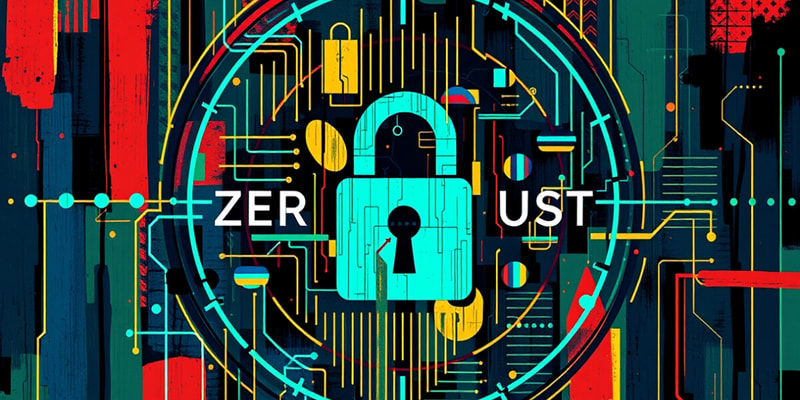Questions and Answers
What is the primary goal in shaping a Zero Trust strategy?
Which principle is NOT critical when designing a Zero Trust security strategy?
When mapping transaction flows, what is being analyzed?
What is a critical element of building a Zero Trust Architecture?
Signup and view all the answers
To safeguard business-critical assets, what should be identified?
Signup and view all the answers
What does constant monitoring in a Zero Trust environment aim to achieve?
Signup and view all the answers
Which factor poses a risk that should be considered when shaping a Zero Trust strategy?
Signup and view all the answers
What does the principle of focusing on business outcomes in a ZT strategy emphasize?
Signup and view all the answers
What principle does ZT adhere to in order to ensure data minimization and access control?
Signup and view all the answers
How does ZT enhance user privacy in data management?
Signup and view all the answers
Which of the following best describes the result of strict access controls in ZT?
Signup and view all the answers
What is a key feature of ZT that aids in real-time threat management?
Signup and view all the answers
Which component of ZT is critical for meeting regulatory compliance requirements?
Signup and view all the answers
What aspect of TPRM is addressed by ZT principles?
Signup and view all the answers
How does ZT support compliance reporting?
Signup and view all the answers
What is necessary for managing risks associated with third-party partners in a ZT framework?
Signup and view all the answers
What is the primary focus when defining your protect surface in a Zero Trust strategy?
Signup and view all the answers
Which of the following data types is considered sensitive and should be prioritized as part of the protect surface?
Signup and view all the answers
In which step of implementing a Zero Trust strategy is transaction flow mapping conducted?
Signup and view all the answers
What component is emphasized in Step 3 when building and implementing protect surface projects?
Signup and view all the answers
Which of the following best describes the type of policies focused on in Step 4?
Signup and view all the answers
What key process is fundamental to the success of a Zero Trust architecture as outlined in Step 5?
Signup and view all the answers
What term refers to the combination of sensitive data and vulnerability components within the protect surface?
Signup and view all the answers
What is a key aspect to steer clear of when defining protect surfaces?
Signup and view all the answers
Study Notes
Zero Trust (ZT) Framework
- ZT serves as a foundational model for privacy, security, compliance, and third-party risk management in organizations.
- Adopts the principle of "never trust, always verify" to ensure tight control and monitoring of sensitive data access.
Privacy
- Data Minimization and Access Control: Reduces unauthorized data exposure by monitoring access to sensitive information.
- Enhanced User Privacy: Protects user privacy by restricting access to necessary personal data.
Security
- Reduced Attack Surface: Micro-segmentation and strict access controls limit paths for potential attackers in networks.
- Real-time Monitoring and Response: Continuous monitoring enhances threat detection and response, bolstering overall security posture.
Compliance
- Regulatory Alignment: Aligns with regulatory frameworks demanding strict access controls and data protection measures.
- Audit and Reporting: ZT architectures facilitate easier logging of access and changes, aiding compliance audits.
Third-Party Risk Management (TPRM)
- Vendor Access Limitations: ZT principles ensure third-party vendors have just enough access to perform their functions.
- Continuous Verification of Third-Party Credentials: Regular checks help mitigate risks associated with external partners.
Implementation Steps
- Step 2: Map Transaction Flows: Identify and classify data movement within and outside the organization.
- Step 3: Build a Zero Trust Architecture (ZTA): Create necessary infrastructure and capabilities for ZT.
- Step 4: Create ZT Policy: Establish guidelines governing network, system, and data access.
- Step 5: Monitor and Maintain the Environment: Continuous oversight is crucial for ongoing security and threat adaptation.
Zero Trust Design Principles
- Focus on business outcomes by aligning ZT strategy with organizational goals and IT requirements.
- Important to recognize unique organizational threats from variables like organized crime and nation-state actors.
- Prioritize safeguarding business-critical assets, termed “crown jewels”, within the ZT framework.
Protect Surface Identification
- Shift focus from defending against attacks to protecting valuable data, applications, and assets known as DAAS.
- Data Examples: Sensitive information such as PCI, PHI, PII, and IP which, if compromised, can result in significant harm.
- Application Examples: Software that interacts with sensitive data or manages critical business processes.
- Asset Examples: IT, OT, or IoT devices, including PoS terminals, SCADA controls, and networked medical devices.
Studying That Suits You
Use AI to generate personalized quizzes and flashcards to suit your learning preferences.
Description
Explore the principles of Zero Trust (ZT) security and its impact on privacy, compliance, and risk management. This quiz emphasizes how ZT can solve current business challenges through effective data minimization and access control strategies.




